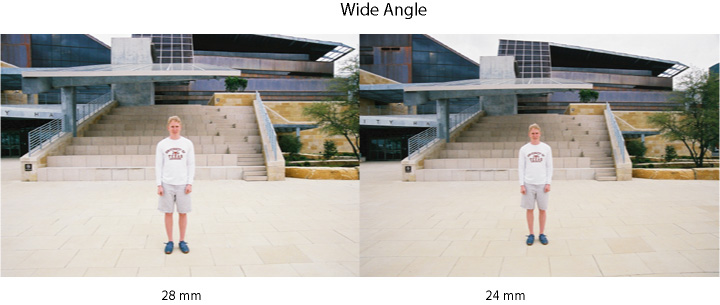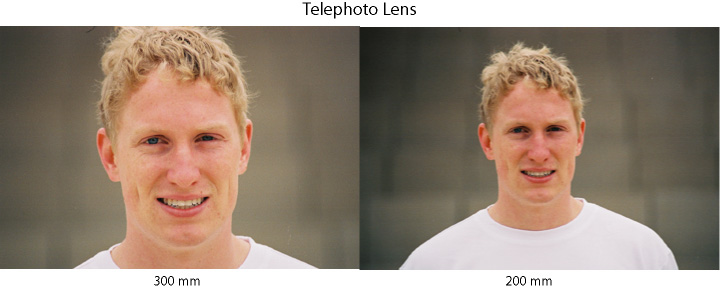Digital camera lenses are described in two ways: focal length, given in mm, and optical magnification, given as 3x, 12x, or the like. The second form of description can be misleading: a 3x lens won't necessarily enlarge a scene by a factor of three. To help you understand differences between lenses, we've taken a series of pictures of a member of the group, Jason Schieck, standing in front of the new Austin City Hall. Everything remained the same in the pictures except the focal length of the lens. Simply put, the larger the focal length, the greater the magnification. Similarly, the smaller the focal length, the greater the angle taken in by the camera.
Small Camera
A typical small digital camera will have a focal length ranging from roughly 38 mm to 114 mm, and will be listed as a 3x zoom: it is a 3x optical zoom because 114/38 = 3. The 35 mm picture (below) represents the widest angle available to take panoramic or large-group pictures; the 100 mm picture (below) represents almost as much magnification as a small digital camera can produce.

Wide Angle
Suppose it's important to take a picture of a large group or of a broad landscape. You will need a small minimum focal length (the first number in the range), perhaps as low as 28 mm or 24 mm (see below for examples). There are a few small cameras with a 28 mm focal length, and only large cameras have the option of still smaller focal lengths.

Telephoto Lens
Taking close up pictures (of nature, sports, or whatever) often requires cameras with a large maximum focal length. 200–300 mm lenses can noticeably enlarge a scene: the pictures below were taken from the same distance as were the pictures above. Situations requiring a great deal of magnification require large cameras; telephoto cameras with fixed lenses can have maximum focal lengths exceeding 400 mm, but small cameras never do even with an add on lens that will increase the focal length at the expense of less picture quality.

The focal length on a telephoto camera with a fixed lens can exceed 400mm so you will have to judge how large Jason's nose would be in such a picture.